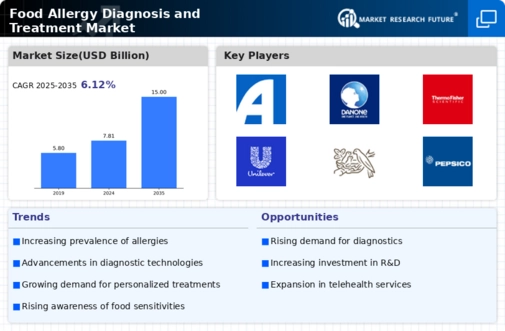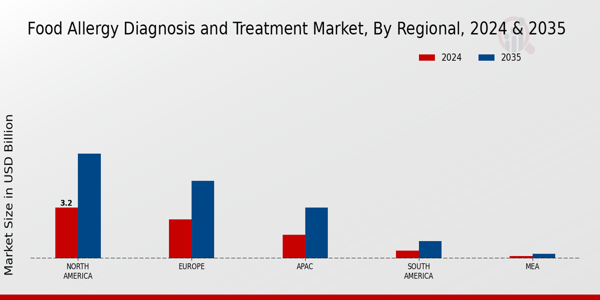Market Analysis
In-depth Analysis of Food Allergy Diagnosis Treatment Market Industry Landscape
The market dynamics of the food allergy diagnosis and treatment market are influenced by a myriad of factors, reflecting the complex interplay between healthcare needs, technological advancements, regulatory landscapes, and consumer preferences. At its core, the market revolves around addressing the growing prevalence of food allergies globally and the demand for effective diagnostic tools and treatments.
One of the primary drivers shaping the market dynamics is the rising incidence of food allergies worldwide. With an increasing number of individuals experiencing adverse reactions to common food allergens, there is a growing need for accurate and timely diagnosis. This surge in prevalence has spurred investment in research and development efforts aimed at enhancing diagnostic capabilities and expanding treatment options.
Technological advancements play a pivotal role in driving innovation within the food allergy diagnosis and treatment market. From the development of molecular diagnostic assays to the emergence of point-of-care testing devices, advancements in technology have revolutionized the landscape of food allergy management. These innovations have not only improved the accuracy and speed of diagnosis but have also facilitated the development of targeted treatment modalities, including immunotherapy approaches.
The regulatory environment also exerts a significant influence on market dynamics, with stringent guidelines governing the approval and commercialization of diagnostic tests and therapeutic interventions. Regulatory agencies play a crucial role in ensuring the safety, efficacy, and quality of products entering the market, thereby shaping industry standards and driving compliance efforts among manufacturers and healthcare providers.
Consumer awareness and preferences also contribute to the evolving dynamics of the food allergy diagnosis and treatment market. As individuals become more informed about food allergies and their potential consequences, there is a growing demand for accessible and affordable diagnostic solutions. Moreover, patients and caregivers increasingly seek out treatment options that not only alleviate symptoms but also address the underlying immune mechanisms driving allergic reactions.
Market competition further intensifies the dynamics within the food allergy diagnosis and treatment landscape, with companies vying for market share through product differentiation, pricing strategies, and marketing initiatives. Established players and emerging startups alike compete to introduce novel technologies and therapeutic approaches that offer superior performance, convenience, and patient outcomes.
Collaborations and partnerships between industry stakeholders, including pharmaceutical companies, diagnostic manufacturers, healthcare providers, and patient advocacy groups, are instrumental in driving innovation and expanding market reach. By fostering synergies and leveraging collective expertise, these collaborations facilitate the development and commercialization of breakthrough products and therapies that address unmet needs within the food allergy community.
Market dynamics within the food allergy diagnosis and treatment space are also influenced by broader macroeconomic trends, healthcare policies, and reimbursement frameworks. Economic factors, such as healthcare spending and insurance coverage, shape patient access to diagnostic testing and treatment options, thereby influencing market demand and growth opportunities.















Leave a Comment